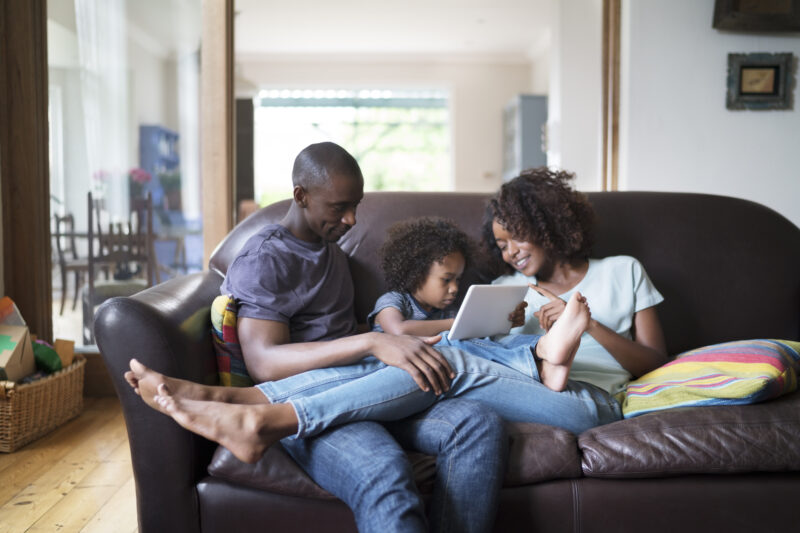As a result of COVID-19, the use of electronic devices for learning, connecting, and recreating has increased greatly. With this increase, families may be concerned about how much screen time is too much screen time for their children. Keep it simple. Remember, screen time management during COVID-19 is more about quality and less about quantity.
As we navigate our new normal, guidelines exist to offer direction for all aspects of our lives, including recommendations for screen time management. These parameters highlight the importance of quality over quantity. Screens can be used for nearly every daily task, and the COVID-19 pandemic has intensified that use. We are faced with a new reality where most of what we do, and what our children do, involves some kind of screen time.
Consider how much of what you do involves screen time now versus before the pandemic. You are able to purchase necessary items, like food, cleaning supplies, and clothing, online; communicate with friends and family through video chats; and attend a virtual tele-health visit with medical providers. While screen time use was expected to increase and has escalated during the pandemic, it is the way in which screen time is used that matters the most. For children, low-quality screen time or recreational screen time should still be limited. Below are some tips to help ensure quality screen time use even though the quantity has increased.
Quality versus Quantity tips during COVID-19
Not all screen time use is equal.
Quality screen time includes video calling to connect with friends and family. If the screen time is spent doing activities that would have been done in person before COVID-19, then the activity does not count as recreational screen time. Playing video games without educational content is an example of recreational screen time with low quality.
Incorporate physical activity.
Engaging in physical activity is very important and can be incorporated into quality screen time through the use of specific apps. Many apps are free and available for children to use to increase their activity levels.
Create personal space.
Use screen time to create personal space in your home. You may have taken on the roles of school teacher, child care worker, full-time employee, and homemaker – at the same time. Let your child watch a favorite movie if you are busy with work or other activities in which your child cannot participate. Just remember to aim for 2 hours or less a day of low-quality recreational screen time.
Plan ahead.
Find apps, games, and videos that your child can safely do by himself or herself. Add these to your daily routine. Think of educational screen time as a new platform for learning.
Safety first.
Manage your children’s safety settings and parental permissions. Keep all devices centrally located to keep track of use. Have children return devices to the central location after they are finished with their activity.
Develop a family media plan.
Create a family media plan to ensure quality over quantity. Visit HealthyChildren.org to create a customized online family media plan (Spanish option available).
Additional Resources
Clearinghouse for Military Family Readiness at Penn State. (2020). Tips for working at home with kids. http://thrive.psu.edu/blog/tips-for-working-at-home-with-kids/
Unicef Kid Power. (2020). Best apps for keeping kids active. https://www.unicefkidpower.org/best-apps-for-keeping-kids-active/
References
American Academy of Pediatrics. (2020, April 20). Parenting during the Covid-19 Pandemic: Advice from psychologists on the best ways to cope with the new way of life—and the new stressors—caused by the global health crisis. Retrieved from https://www.apa.org/topics/covid-19/parenting-during-pandemic
Nagata, J., Abdel Magid, H., & Gabriel, K. (Accepted/In Press). Screen time for children and adolescents during the COVID‐19 pandemic. Obesity. https://doi.org/10.1002/oby.22917

